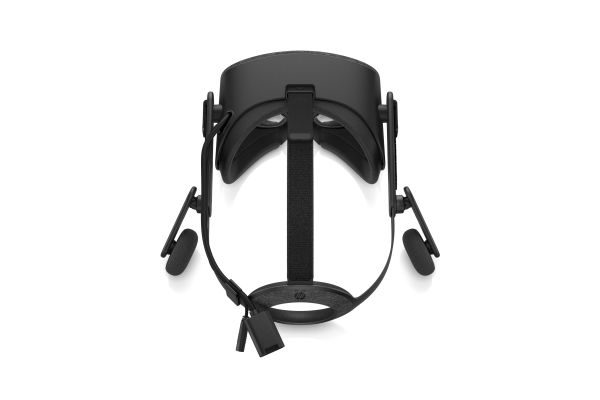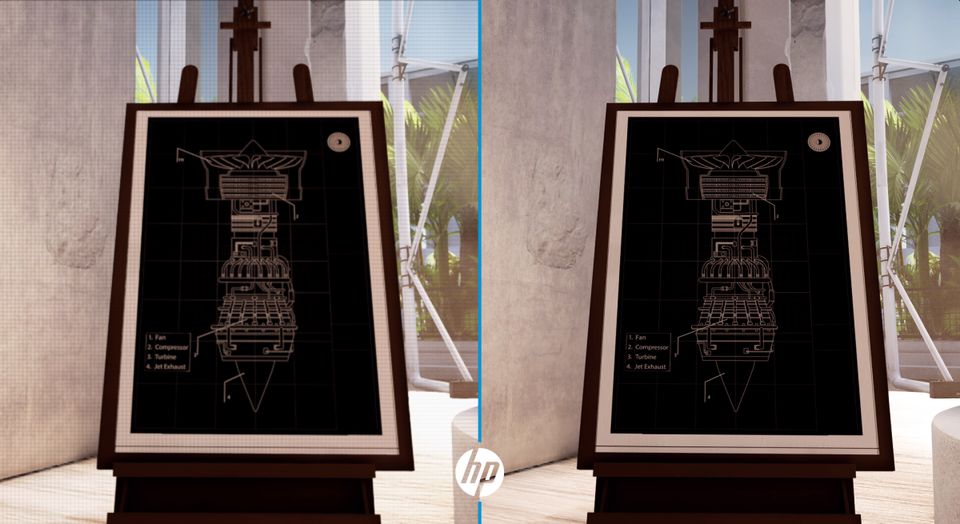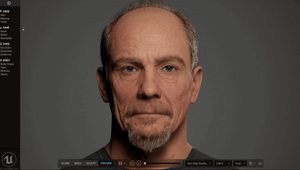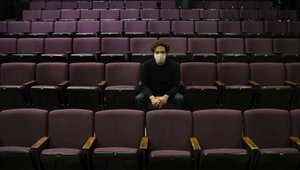
HP's New VR Headset 'Reverb' Is a Breath of Fresh Air

HP’s new virtual reality headset, ‘Reverb - Professional Edition’, is a game-changer. With a staggering 2160 x 2160 panel per eye, a 114-degree field of view, inside-out tracking, and a lightweight design, we finally have a headset that delivers across the board.
It’s clear HP has done its homework with this device - it’s created a headset that solves three specific pain points commonly associated with VR solutions: superb visual quality, smarter fit and comfort, especially during extended usage for intense workflows; and, worry-free deployment and support.
In a press release, Spike Huang, vice president and global lead of VR, HP Inc. said: “As the commercial VR segment is expected to grow to $34 billion by 2022, customers are seeking lifelike VR viewing to help open doors to new business opportunities in product design, training, and engineering. The time for commercial VR is now and adding HP Reverb to our broader virtual reality portfolio is an important step in addressing this growing market.”
Here’s the low-down on Reverb...
Design
It’s a completely new headset compared to HP’s Windows Mixed Reality Headset which launched a couple of years ago. Its sleek frame covers a significantly smaller percentage of your face and it also features a new fabric-lined front and a supportive three-point band, rather than halo-style headband. The padding around the lenses also does a fantastic job at eliminating light leakage.

The doughnut at the back distributes the weight nicely, and in general, the headset feels incredibly light (it’s only 1.1 pounds/0.5kilograms), which is a significant achievement given the amount of tech the unit is packing.
Features
Most impressive is the headset’s display resolution of 2160 x 2160 pixels per eye. That’s crisper than the 2160 x 1200 pixel-per-eye resolution of the HTC Vive, as well as Samsung’s Odyssey HMD headset and the Acer Mixed reality HMD. It makes it one of the highest-fidelity offerings on the market.
It isn’t just the sharper screen that allows this headset to render so much more detail: HP also re-engineered its optics. Reverb moves away from the traditional roughly-hemispherical design to one that is more rectangular, which really improves the perceived diagonal FoV when the headset is worn.
Built-in inside-out 6-degree-of-freedom (6DoF) positional tracking means no external sensors are needed and it also has two front-facing cameras to enable augmented reality applications.
HP Reverb also features integrated headphones with spatial audio and smart assistant compatible dual microphones for a greater immersive experience and collaboration in multi-user VR environments.

To provide a definitive comparison between the impressive visuals of Reverb and a representation of a ‘first generation’ headset, REWIND developed an experience that allows the user to toggle between Reverb’s native resolution and field of view, and that of a headset from five years ago. The difference in text legibility between the emulated ‘Gen 1’ headset mode and native Reverb is astounding. It’s impressive how much more readable text and fine detail is at this resolution.
Pricing And Availability
The HP Reverb Virtual Reality Headset – Pro Edition is expected to be available in May for €629. The Consumer Edition is expected to be available in April for €579. Both versions come with motion controllers. The only hardware difference between the two versions is their bundle: the Pro model comes bundled with a 0.6-meter cable for HP's Z VR Backpack PC as well as a cleanable face cushion.
Deployment
Deployment of HP Reverb is simple. It has integrated Bluetooth with pre-paired motion controllers right out of the box (no need to pair) and support for Windows Mixed Reality and Steam VR. With Windows Mixed Reality’s inside out tracking, setup is even easier – just plug in the VR headset and start the experience. For multi-user environments, there are removable, cleanable facemask cushions.
You won’t need PC gaming hardware to power the Reverb. Users will merely need an Nvidia GTX 1070 to power their 4K virtual reality experiences, and you’ll likely be able to get away with using the even more affordable Nvidia GeForce GTX 1660 Ti.
The Reverb is a great leap forward for VR. It delivers visual and audio fidelity that will elevate the experiences and accelerate the adoption of VR.
Sol Rogers is founder and CEO of REWIND









